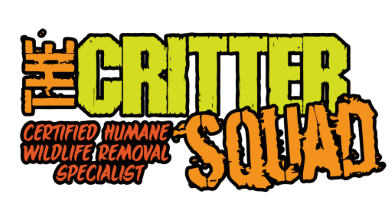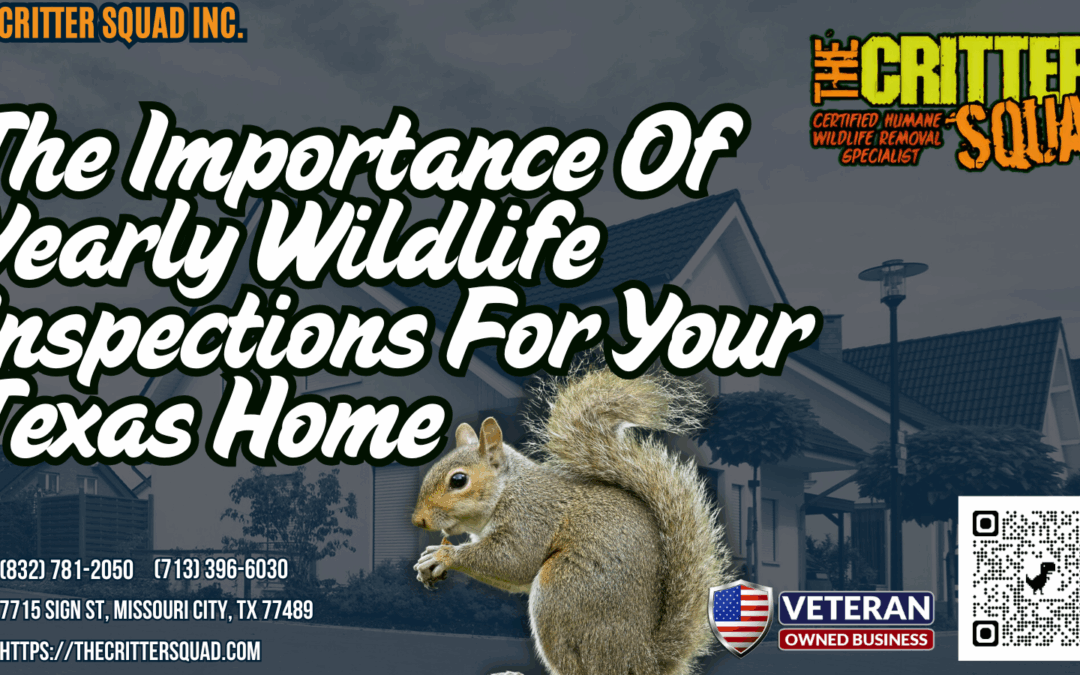Yearly wildlife inspections for Texas homes are essential for identifying potential entry points and preventing property damage. Local wildlife can pose health risks, carrying diseases and parasites harmful to humans and pets. Regular assessments help homeowners understand their property’s vulnerabilities and guarantee effective preventative measures are in place. Engaging professional services can enhance the inspection process, uncovering hidden risks and offering expert advice. Discovering the full scope of benefits can further inform proactive steps for effective wildlife management.
Key Article Highlights
- Yearly wildlife inspections identify potential entry points, reducing the risk of infestations from local species like raccoons and opossums.
- Regular assessments help detect early signs of wildlife presence, preventing property damage and health hazards associated with zoonotic diseases.
- Professional inspections provide specialized knowledge on wildlife behavior, ensuring that homeowners understand seasonal activity and risks specific to Texas.
- Implementing preventative measures during inspections, such as sealing gaps, can significantly lower vulnerabilities and discourage wildlife intrusion.
- Annual evaluations promote a clean outdoor environment, making homes less attractive to wildlife and enhancing overall safety for residents.
Understanding the Risks of Wildlife Encounters
While many homeowners may appreciate the beauty of wildlife, they often underestimate the risks associated with encounters in residential areas. Understanding wildlife behavior is essential for mitigating these risks, as local species can exhibit unpredictable actions when confronted with humans. For instance, animals such as raccoons or skunks may become aggressive if they feel threatened or cornered. Additionally, the presence of wildlife can lead to property damage or the spread of zoonotic diseases. Homeowners must recognize that even seemingly harmless species can pose significant threats to both human safety and property integrity. By educating themselves on local species and their behaviors, homeowners can take proactive measures to minimize risks, ensuring a harmonious coexistence with the natural world surrounding their homes. Furthermore, raccoon nesting habits can often lead to unwanted intrusions in attics or garages, exacerbating the potential for damage and health risks. Rats, for example, are known to exploit even the smallest gaps to gain entry into homes, which highlights the importance of sealing potential rat entry points. Bats, for example, can enter homes through small openings, leading to attic bat problems that may require professional intervention. To further protect their homes, residents should consider consulting with raccoon trapping experts who can provide effective strategies for humane raccoon removal.
Identifying Potential Entry Points
Understanding wildlife behavior highlights the importance of identifying potential entry points into homes. Various entry point locations serve as gateways for common wildlife, including rodents, raccoons, and squirrels. Opossums, for example, often seek shelter in attics when they can access them through entry points like holes or gaps in the roof. Regular inspections can help homeowners recognize these vulnerabilities, allowing for timely prevention measures. Implementing humane squirrel removal strategies can further minimize the risk of infestations. Additionally, humane bat removal practices are essential for addressing potential bat intrusions, ensuring that these creatures are safely excluded from your home without harm.
| Entry Point Location | Common Wildlife | Prevention Tips |
|---|---|---|
| Gaps in Foundation | Rodents | Seal with concrete |
| Roof Vents | Raccoons | Install screens |
| Chimneys | Birds | Use chimney caps |
| Holes in Siding | Squirrels | Patch with metal mesh |
| Open Windows | Bats | Install secure screens |
Health Hazards Associated With Wildlife
Health hazards associated with wildlife can pose significant risks to homeowners, particularly when animals infiltrate living spaces. These animals are often carriers of various diseases, which can lead to serious health concerns for residents. For instance, rodent infestations can result in disease transmission through droppings and urine, exposing individuals to pathogens such as hantavirus and leptospirosis. Additionally, parasites like ticks and fleas can be transferred from wildlife to pets and humans, further complicating health risks. Effective pest control strategies are essential to mitigate these hazards, ensuring that homes remain safe environments. Regular wildlife inspections can help identify potential issues before they escalate, protecting the health of families and the integrity of homes.
Preventative Measures and Solutions
Preventing wildlife intrusion into homes requires a multifaceted approach that addresses both physical barriers and behavioral modifications. Homeowners should emphasize regular wildlife monitoring to assess potential entry points, such as gaps in roofs, vents, and foundations. Implementing proper sealing techniques can markedly reduce vulnerabilities. Additionally, maintaining a clean outdoor environment by securing trash and removing food sources discourages wildlife from approaching. Establishing an appropriate inspection frequency—ideally annually—ensures timely identification of any new risks or signs of intrusion. Educating residents about common wildlife behaviors can further aid in proactive prevention. By combining these preventative measures with consistent vigilance, homeowners can effectively protect their properties from unwanted wildlife encounters while fostering a safe living environment.
The Benefits of Professional Inspections
While many homeowners may attempt to conduct their own inspections for wildlife, the advantages of engaging professional services can greatly enhance the effectiveness of these evaluations. Professionals possess specialized knowledge of wildlife behavior and understand the nuances of animal activity in different seasons. This expertise allows for more accurate assessments and timely interventions.
The benefits of professional inspections include:
- Thorough Assessments: Experts can identify potential entry points and signs of wildlife that may go unnoticed by untrained individuals.
- Increased Inspection Frequency: Professionals can recommend ideal inspection schedules tailored to specific wildlife risks in Texas, ensuring timely responses.
- Preventative Strategies: Experienced inspectors offer actionable advice, helping homeowners implement long-term solutions to mitigate wildlife concerns effectively.
Frequently Asked Questions
How Often Should I Schedule Wildlife Inspections for My Home?
The ideal inspection frequency for wildlife should be annual, as this allows for effective preventative measures. Regular assessments help homeowners identify potential issues early, ensuring both safety and the preservation of their property’s integrity.
What Types of Wildlife Are Common in Texas Homes?
Like hidden shadows in the night, common wildlife in Texas homes includes rodents, which can lead to infestations, and raccoons, known for their curious behavior. Awareness of these species is essential for effective management and prevention.
Are There Specific Seasons for Increased Wildlife Activity?
Seasonal patterns markedly influence animal behavior, with heightened wildlife activity typically observed during spring and autumn. These changes arise from mating seasons and food availability, necessitating increased vigilance for potential interactions with human habitats during these times.
Can Wildlife Inspections Help With Home Insurance Claims?
Wildlife inspections can greatly aid home insurance claims by documenting wildlife damage. Such documentation supports policyholders in leveraging their insurance policies effectively, ensuring that claims are substantiated and increasing the likelihood of coverage for damages incurred.
What Should I Do if I Spot Wildlife in My Home?
When unexpected guests of the wild appear indoors, prioritizing home safety is essential. Engaging professional wildlife removal services guarantees a harmonious resolution, safeguarding both the inhabitants and their newfound visitors, while restoring peace to the living environment.




























